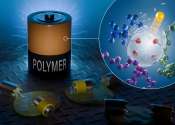New engine capability accelerates advanced vehicle research
In the quest for advanced vehicles with higher energy efficiency and ultra-low emissions, Oak Ridge National Laboratory researchers are accelerating a research engine that gives scientists and engineers an unprecedented view ...
Dec 21, 2020
3
282









